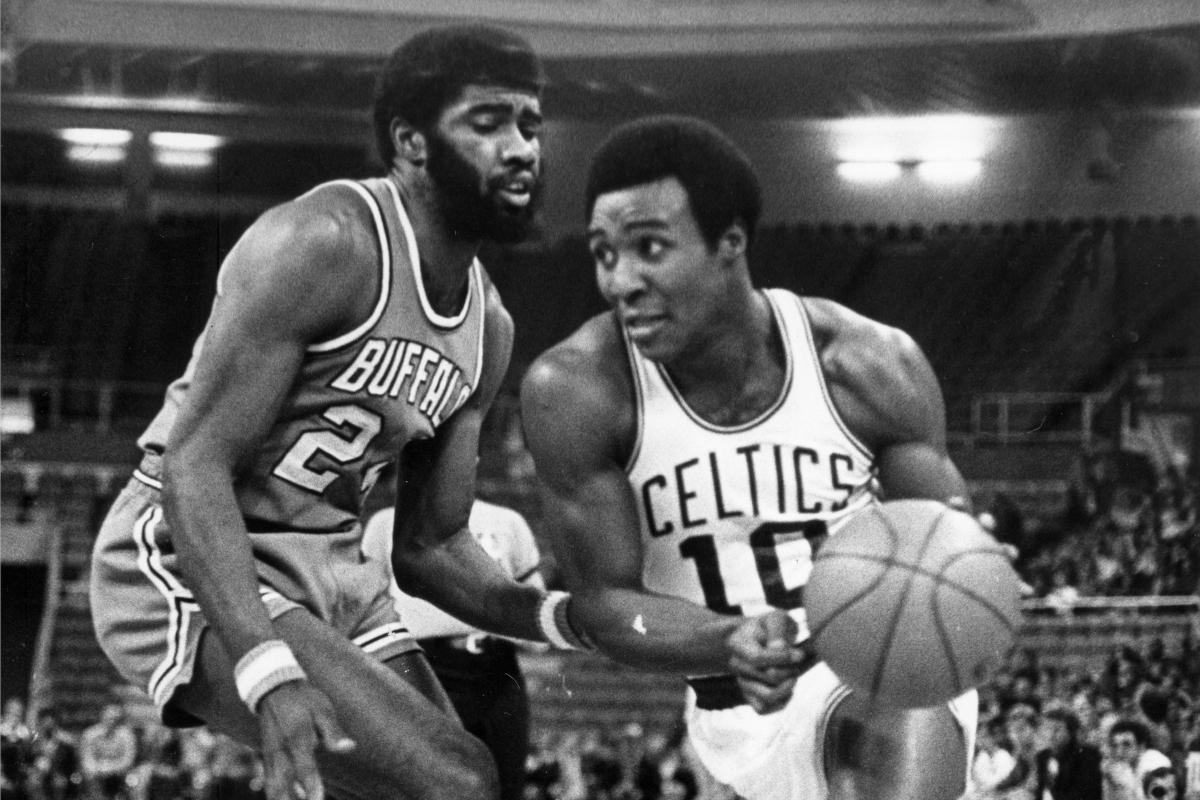NBA
The Boston Celtics Nearly Bounced to San Diego Until the Strangest Trade Ever Saved Them

The Boston Celtics share the NBA record for most championships with 17. The Los Angeles Lakers matched them in 2020, and the Celtics have won only six of those titles since 1969. But for many years, Boston was the most-decorated franchise in the NBA. It’s easy to forget how close that came to being swept away.
When every NBA franchise boasts a value of more than $1 billion, it’s hard to imagine the difficult financial straits the league was in after merging with the ABA in 1976. The last season with full crowds was 2018–19, and the NBA averaged 17,853 fans per game. In 1977–78, without the benefit of a multibillion-dollar TV contract, teams averaged 11,446 fans per game. Few franchises weren’t in some financial difficulty.
That and a bad geographical match nearly led the Celtics to change coasts.
The Boston Celtics collapsed in 1977–78

In the late 1950s and 1960s, the Boston Celtics were the preeminent dynasty in North American sports. Between 1957–69, the Celtics won 11 of 13 championships and won eight straight at one point. After a couple of years of retooling, the Celtics returned to the playoffs in 1972 and won titles in 1974 and 1976.
It was also in 1972 that Los Angeles film producer Irv Levin bought a majority share of the Celtics. He wasn’t a popular owner in Boston, even with the team’s success, and by 1978 he wanted out. According to the New York Times, Levin wanted a team closer to home and talked about putting a team in San Diego.
Moving the Celtics would have involved a massive fight with the NBA. Nothing says a league is unstable as its most successful club moving 3,000 miles to a city where pro basketball had already failed twice. Boston was a bad team in 1977–78, slipping to 32–50 in John Havlicek’s final season. The core of Dave Cowens, Jo Jo White, and Havlicek aged, and the team slid accordingly.
The one young star Boston drafted in that span, Paul Westphal, was traded to the Phoenix Suns for Charlie Scott, a deal that didn’t age well at all.
Fortunately for Levin, there was another struggling franchise that was in worse shape than his.
The Buffalo Braves were looking for an escape hatch
The short-lived Buffalo Braves joined the NBA in 1970. In eight years, the team made three playoff trips from 1974–76. But in 1976, they had an ownership change. Future Kentucky Gov. John Y. Brown took $3 million to fold his ABA franchise in Louisville to facilitate the ABA-NBA merger in 1976. He took some of that money and bought the Braves.
Within two years, Brown had stripped the club to the bones. He traded stars Bob McAdoo and Jim McMillian, dumped Adrian Dantley as soon as he showed promise, and by 1977–78, the Braves were awful. After a 27-win season, the Braves were looking for a new home. Dallas, Miami, Birmingham, and Minneapolis were all on the table.
Enter Irv Levin. He wanted to own a team in San Diego, near his LA home. The Braves were looking for a new home. Levin and Brown cooked up a plan: they would trade franchises. No money would change hands, and the Braves would be off to San Diego. Problems solved.
As history played out, it was just the start of more problems for the star-crossed Braves franchise.
The Boston Celtics moved on quickly

Brown incurred the wrath of Boston Celtics general manager Red Auerbach immediately. Levin and Brown arranged a seven-player trade without letting the basketball people know. Brown also traded three first-round picks to get the fading McAdoo,
The incidents nearly prompted Auerbach to take a job in 1979 running the New York Knicks. Brown owned the team for one tumultuous year, selling to Harry Mangurian.
The Braves became the Clippers in San Diego, where they played six seasons and drew crowds in the hundreds. Levin sold to Donald Sterling in 1981. Sterling moved the Clippers to LA without league approval and owned the club until he sold under pressure in 2014.
The Braves-Celtics swap was not unprecedented in pro sports. In 1972, Carroll Rosenbloom, owner of the Baltimore Colts, traded his team to Bob Irsay and took over the LA Rams. Rosenbloom saved $4.4 million in taxes as part of the deal, so he was happy.
The Boston Celtics survived the turmoil, winning three titles in the 1980s and another in 2008. But how close were we to discussing the legacy of Clippers legend Larry Bird? Knicks’ savior Red Auerbach? Indeed, closer than any Boston fan wants to contemplate for very long.
Historical information courtesy of Basketball Reference.











